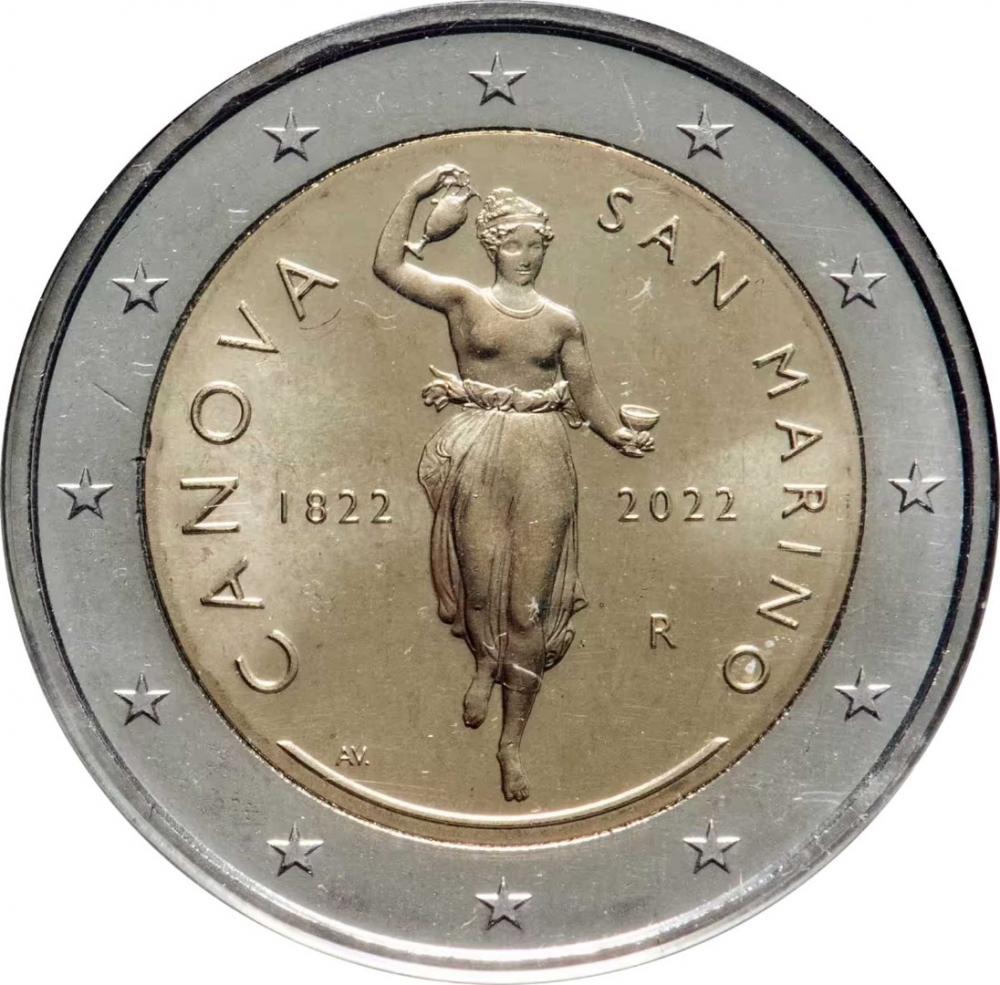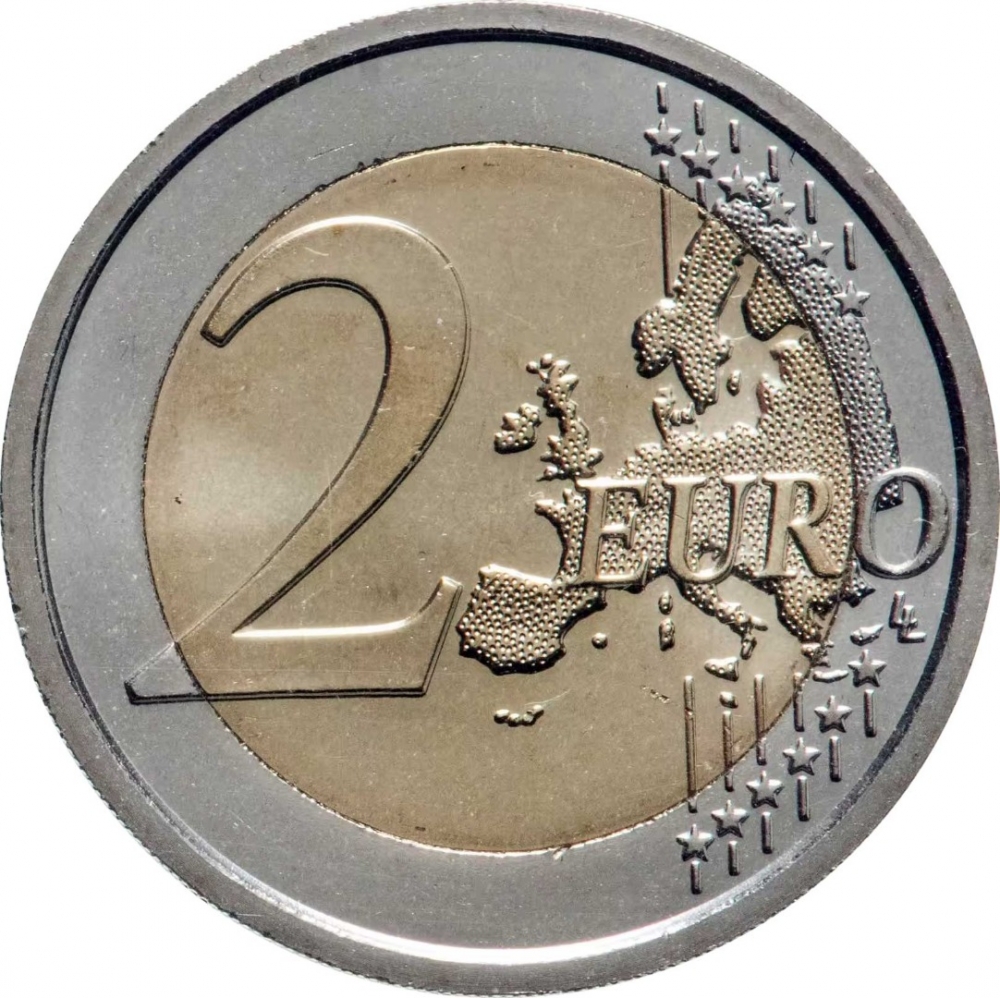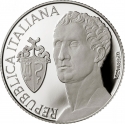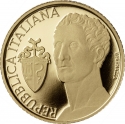You are about to finish your registration. Please check your mailbox (including spam folder). There should be a letter with a confirmation link. Check setting to make sure that your e-mail address is correct.
Send letter againDescription
Antonio Canova (1757–1822) was an Italian Neoclassical sculptor, famous for his marble sculptures. Often regarded as the greatest of the Neoclassical artists, his sculpture was inspired by the Baroque and the classical revival, and has been characterised as having avoided the melodramatics of the former, and the cold artificiality of the latter.
Issue date: 4 October 2022
Obverse

|
Depicts the Hebe (Ebe) by Antonio Canova, dividing dates and surrounded by the country name. Engraver's initials below. CANOVE SAN MARINO |
|---|---|
Reverse

|
A geographical map of Western Europe spans the outer ring and inner core on the right side of the coin. The inscription 2 EURO is superimposed over the map of Europe, with the numeral “2” located in an open field representing the eastern Atlantic Ocean. 2 EURO |
| Edge |
The sequence "2 ★" repeated six times alternately upright and inverted 2 ★ 2 ★ 2 ★ 2 ★ 2 ★ 2 ★ |
Characteristics
| Type | Commemorative Issue (Non-circulating) |
| Material | Nickel Brass |
| Weight | 8.5 g |
| Diameter | 25.75 mm |
| Thickness | 2.2 mm |
| Shape |
|
| Alignment | Medal |
| Mint |
Italian State Mint and Polygraphic Institute (IPZS)
|





